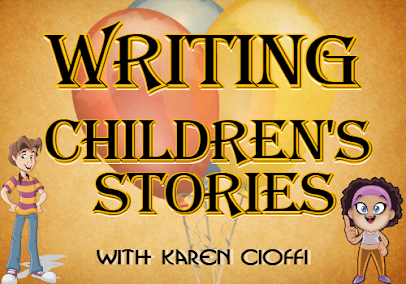Picture books have 3 levels or purposes in regard to the reader and purchaser. Think of it as the structure of a house: there’s a basement, a first floor, and often an upper floor.
Level 1: The basement, or Surface Level, is geared toward the youngest reader (or listener if too young to read). This child is able to understand what’s going on. He is engaged by the story.
Using a wonderful children’s picture book, Caps For Sale by Esphyr Slobodkina, the child will think it’s funny that monkeys take the peddler’s caps, put them on their heads and won’t take them off.
Level 2: The first floor, or the Underlying Meaning Level, is for the older children who can understand on a deeper level. At this age, they can realize danger, anger, and a cause and effect scenario.
Again, using Caps for Sale, the children should be able to understand that the monkeys are mimicking everything the peddler does, but the peddler doesn’t realize what they’re doing. With this age child, the reader may yell out, “They’re doing what you do!” in an effort to help the peddler.
Level 3: The upper floor, or the Take Away Level, is the value the book holds for the purchaser, usually the parent, grandparent, or teacher. The adult reading the book to the child understands the meaning of the story, what value can be taken away by children.
In the case of Caps for Sale, the young child is engaged and understands the monkeys took the peddler’s caps and wouldn’t give them back. The older child is engaged and understands that the peddler is causing the monkeys to act as they are. The value that might be taken away is that our actions create reactions.
I just want to point out that Caps for Sale was first copyrighted in 1940 and renewed in 1967, so there is a great deal of telling in the story.
Back then, writing for children used a different structure. The stories were not geared toward today’s short attention span and need for action. But, some stories, such as this one, hold up even through change.
Keep in mind though, in today’s children’s market a writer must take into account that a child is bombarded with media and entertainment. Children’s publishers want showing rather than telling. They also want action right from the beginning of the story. In today’s market it’s the writer’s job to grab the young reader quickly.
ABOUT THE AUTHOR
Karen Cioffi is an award-winning children’s author and children’s ghostwriter, rewriter, and coach with clients worldwide. She is also the founder and editor-in-chief of Writers on the Move ,and an author online platform instructor with WOW! Women on Writing.
Karen’s children’s books include Walking Through Walls and The Case of the Stranded Bear. She also has a DIY book, How to Write Children’s Fiction Books. You can check them out at: https://karencioffiwritingforchildren.com/karens-books/. If you need help with your children’s story, visit: https://karencioffiwritingforchildren.com.
A feature in the right column of this blog lets you subscribe to #SharingwithWriters so you don’t miss any of Karen’s posts on writing for children.
MORE ABOUT THE BLOGGER
Howard-Johnson is the multi award-winning author of fiction, creative nonfiction, and poetry. She is also a marketing consultant, editor, and author of the multi award-winning HowToDoItFrugally Series of books for writers including the multi award-winning The Frugal Book Promoter (http://bit.ly/FrugalBookPromoIII), now offered in its third edition by Modern History Press. Carolyn's latest is in the #HowToDoItFrugally Series of books for writers is How to Get Great Book Reviews Frugally and Ethically. She has two booklets in the #HowToDoItFrugally Series, both in their second editions from Modern History Press. Great Little Last Minute Editing Tips for Writers (http://bit.ly/LastMinuteEditsII) and The Great First Impression Book Proposal (http://bit.ly/BookProposalsII) are career boosters in mini doses and both make ideal thank you gifts for authors. The one on writing book proposals is also available as an Audio Book. The Frugal Editor (http://bit.ly/FrugalEditor), now in its second edition, is the winningest book in the series.
Carolyn also has three frugal books for retailers including one she encourages authors to read because it helps them convince retailers to host their workshops, presentations, and signings. It is A Retailer’s Guide to Frugal In-Store Promotions: How To Increase Profits and Spit in the Eyes of Economic Downturns with Thrifty Events and Sales Techniques (http://bit.ly/RetailersGuide).
In addition to this blog, Carolyn helps writers extend the exposure of their favorite reviews at TheNewBookReview.blogspot.com. She also blogs all things editing--grammar, formatting and more--at The Frugal, Smart, and Tuned-In Editor (http://TheFrugalEditor.blogspot.com). Learn more and follow for news on her new releases direct from Amazon at http://bit.ly/CarolynsAmznProfile.



Carolyn, so glad to be a regular contributor to Sharing With Writers!
ReplyDelete